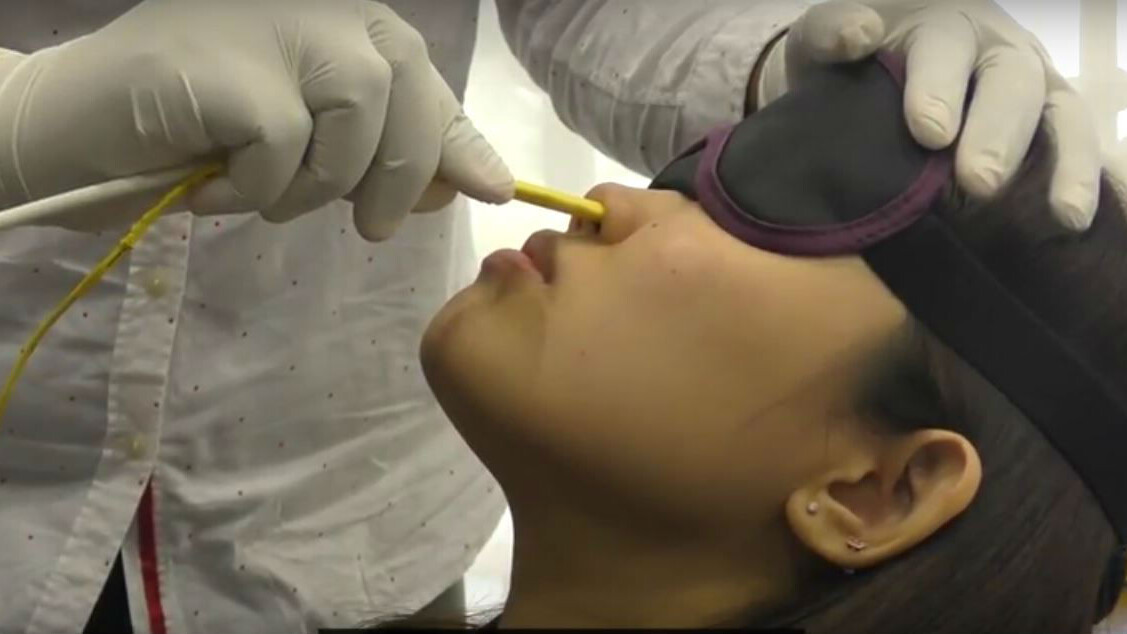Not too long ago, Google claimed to have a developed a search engine for smells. Google Nose, as it was called, was said to be capable of offering “the sharpest olfactory experience available.”
The company claimed that its Street Sense vehicles had ‘inhaled’ and indexed millions of atmospheric miles helping them build a search engine with a database of 15 million smells, which sounded too good to be true. And naturally, it was. The smell internet was Google’s idea of an April Fool’s prank back in 2013.
Now, the joke may be on Google as a new digital smell research team in Malaysia has developed a device that can send a small electric charge to your brain through your nose and trigger the sensation of smell.
The researchers, led by Kasun Karunanayaka – a senior research fellow at the Imagineering Institute – are on a quest to create a “multisensory internet.”
There was already scientific literature that pointed to the possibility of allowing people to perceive odors through electrical stimulation. Karunanayaka’s team used this to experiment with different patterns of nasal stimulation, changing the amount and frequency of the current until finally they managed to produce smell sensations reliably.
Karunanayaka told IEEE that in the initial proof-of-concept experiments, subjects mostly perceived odors they described as fragrant or chemical. Some people reportedly also encountered odors they described as “fruity,” “sweet,” “toasted minty,” or “woody.”
How does the science actually work?
While the concept of communicating smell is not something new, most previous demonstrations used chemical cartridges that attached to computers or phones. In those trials, when a command was sent to the respective devices, it simply triggered the release and mixing of substances to produce an odor. Karunanayaka’s team has now replaced the chemical devices that require cartridges with electrical signals alone.
To prove the concept, Karunanayaka’s team stuck a thin, flexible cable up the noses of 31 volunteers. The cable’s tip had a tiny camera and silver electrodes with which the researchers were able to navigate the subjects’ nasal passages.
Karunanayaka and team were also able to bring the electrodes into contact with the sensitive skin cells of the inner nose that lie seven centimeters above and behind the nostrils. Normally, we sense smells when these same cells are stimulated by chemical compounds causing them to send a charge to the brain through the olfactory nerve. In this case, Karunanayaka’s team zapped the cells directly with an electric current.
The Imagineering Institute’s project has also faced some hurdles. As Karunanayaka admitted, “A lot of people wanted to participate, but after one trial they left, because they couldn’t bear it.”
Sending smell via smartphone
The team is also collaborating with Scentee – a Japanese startup which is reportedly building the world’s first smartphone gadget that can produce sensations of smell. Together, they plan to collaborate on building a Scentee app that integrates with other apps to add smells to various smartphone functions.
For instance, your morning alarm could be the smell of coffee, instead of a ringtone; Scentee’s app could potentially let you customize smells to alert you to different contacts’ text messages. With Scentee’s help Karunanayaka’s team could find a way to effect aromas without sticking a tube up people’s noses.
The team hasn’t announced their solution to this hurdle yet. But if I have to imagine one, they may try to develop a tiny patch that sticks to your inner nose and triggers smells by connecting to your phone or computer via Bluetooth. Or maybe they would still use a less invasive probe to stimulate the olfactory cells. We may now have to stick our noses into their research more often to find out how they overcome this problem.
While this is getting sorted, Karunanayaka and team may also need a more organized database of different patterns of nasal stimulation, and the kinds of smells they produce. As he told IEEE, the team’s next step is to determine whether some smells are specifically linked to certain stimulation parameters.
From the preliminary studies, the team may also have to investigate how the experience varied for each subject. “There may be differences due to age, gender, and human anatomy,” he said.
So we probably won’t get an internet of smells until we can ensure certain nasal stimulation results in the same smell for everyone. I for one wouldn’t click to smell online roses if it could end up smelling like a fart.
Get the TNW newsletter
Get the most important tech news in your inbox each week.





